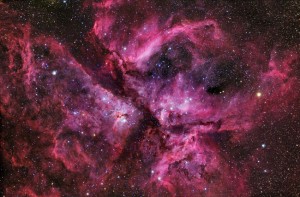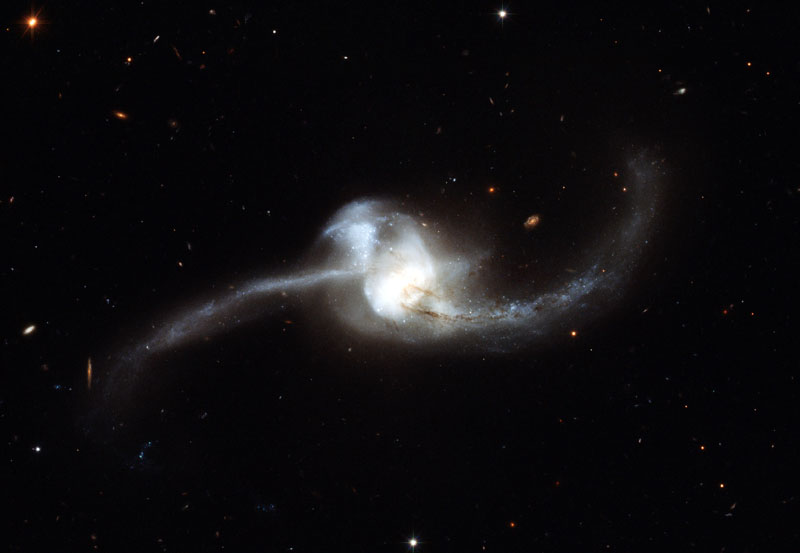 Molecular hydrogen is very difficult to detect. None of its transitions lie in the visible part of the spectrum. It has no radio lines. The molecular hydrogen is a homo nuclear molecule and has no permanent dipole moment. Because of this it does not have rotation vibration spectrum. Electronic transition produces spectral lines in the optical, infrared and UV. The transition between the vibrational states produces lines in the infrared. Transitions between the rotational states of molecules produce least energetic lines, in the microwave and radio region.
Molecular hydrogen is very difficult to detect. None of its transitions lie in the visible part of the spectrum. It has no radio lines. The molecular hydrogen is a homo nuclear molecule and has no permanent dipole moment. Because of this it does not have rotation vibration spectrum. Electronic transition produces spectral lines in the optical, infrared and UV. The transition between the vibrational states produces lines in the infrared. Transitions between the rotational states of molecules produce least energetic lines, in the microwave and radio region.
The molecular hydrogen exhibit ‘spin isomers’ two protons have parallel spin (ortho hydrogen, higher energy state) and anti parallel spin (para hydrogen, lower energy state). Due to ‘spin isomer’ shows quadrupole moment. So, molecular hydrogen has a weak rotational quadrupole transition, not detectable using today’s technology. Thus, the direct detection of
must be based on the weak quadrupole spectrum. The para
dominates at low temperatures (approximately 99.8% at 20k). At room temperature and thermal equilibrium, para
is found to be only 25% (ortho
75%).
The far ultraviolet radiation is a very efficient dissociation of . Thus absorption line (dark lines) in the far UV spectrum can be observed. There are two problems: first there must be UV source (O and B star, new born star) nearby molecular cloud, second far UV spectrum can not be observed from the Earth’s surface. So, space observatory is needed to observe it.
Indirect measurement of : CO molecule is most abundant after
in the molecular cloud. Interestingly, the densities of CO and
are found to be in equal proportion in all molecular clouds. The ratio is about
:CO =
. Thus the amount of CO in molecular cloud is useful as a tracer of
. Mapping CO density is therefore used to determine the distribution of cold gas in the Interstellar medium. CO has strong lines at 2.6 mm from transition between rotational states.







“Molecular hydrogen is very difficult to detect. None of its transitions lie in the visible part of the spectrum. It has no radio lines. The molecular hydrogen is a homo nuclear molecule and has no permanent dipole moment. Because of this it does not have rotation vibration spectrum.”
Say, I’m hoping you can provide a citation or reference for your statement concerning the difficulty of molecular hydrogen detection, particularly very cold primordial molecular hydrogen and atomic helium around 10 to 15 Kelvins, and assuming there’s no measurable stellar metallicity to serve as a proxy.
Thanks so much.
This article might be of some help http://www.space.com/16147-space-gas-molecule-explained.html
Your ‘Interstellar Gas Molecule Mystery Revealed’ reference discusses a CO tracer, but I’m looking for the opposite, the absorption and emission spectrum from Big Bang molecular hydrogen and helium (at circa 10 K) when the stellar metallicity has ‘snowed out’ into the solid state, leaving no proxy gaseous stellar-metallicity. (Sorry for the delay.)
Thanks again so much.